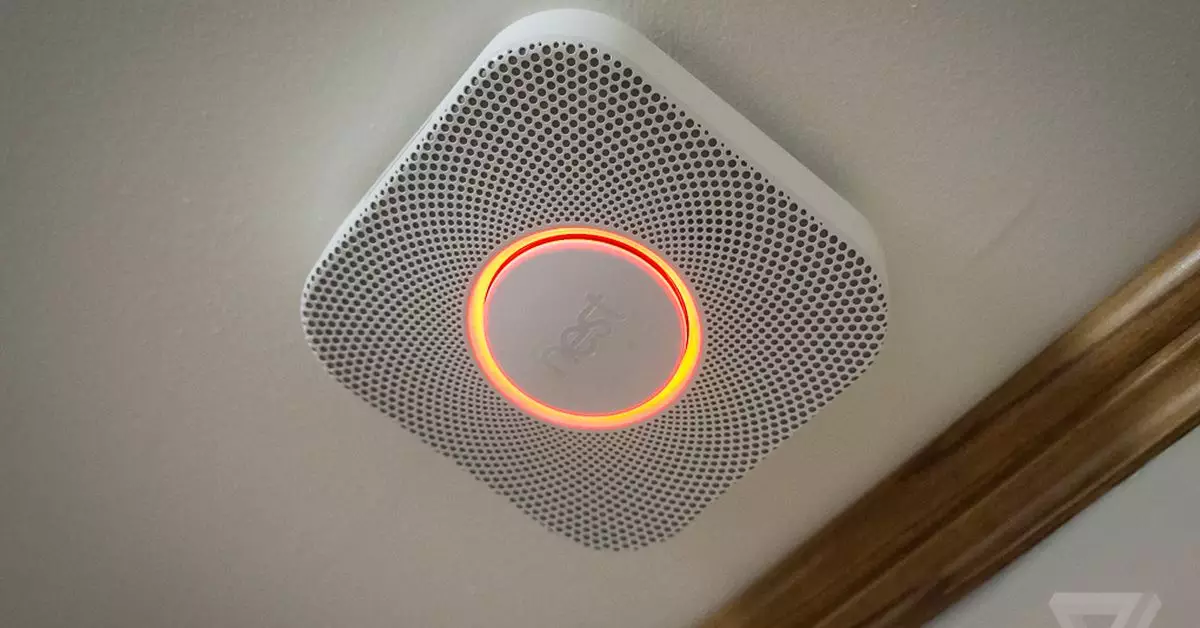In an age where smart home technology increasingly dominates our daily lives, updates to integrated systems warrant careful consideration and discussion. Google’s announcement regarding the migration of the Nest Protect smoke and carbon monoxide (CO) alarm to the Google Home app marks a significant transition not only for users of these products but also for the overarching landscape of home automation. With this shift, the tech giant is signaling the conclusion of the Nest app era and redefining how users interact with their smart devices.
For many users, the Nest app was a familiar sanctuary, a dedicated interface that offered control over their Nest ecosystem. However, Google’s gradual consolidation efforts have been evident over the past few years, as various Nest devices made their way into the Google Home app. As of recent updates, the Nest Protect is the final major device being integrated, cementing the Google Home app as the one-stop-shop for managing connected household gadgets. This architectural shift not only aims to streamline user interactions but also fortifies Google’s commitment to a more unified smart home experience.
By fully embracing the Google Home platform, users can now expect a collection of enhanced features that promise to augment their home safety measures. The transition offers improved notification capabilities, allowing users to receive critical alerts related to smoke and carbon monoxide hazards directly through the app. This advancement not only simplifies monitoring but also enhances the overall responsiveness of the alarm system.
One of the standouts of the transition is the expanded range of features available to users. Critical notifications about the health and status of the device will now be more accessible than ever. Users will benefit from the ability to receive alerts regarding battery status and device issues, ensuring that they can act swiftly to mitigate risks. The introduction of a centralized safety checkup and scheduling for sound tests further exemplifies Google’s insistence on prioritizing safety in smart homes.
Another noteworthy addition is the live camera feed feature. Users will now be able to view security camera feeds directly from the Nest Protect’s alarm card, which adds a layer of immediacy to monitoring one’s home for potential threats. For users in the United States subscribed to Nest Aware, there is also now an option for E911 calling that allows for rapid emergency responses, even when they are not physically present at their homes. Such features not only exemplify technological advancement but also show Google’s commitment to protecting its users.
Beyond integrating the Nest Protect into Google Home, Google is also enhancing the app’s capabilities concerning smart locks through its adoption of Matter, a universal connectivity standard for smart devices. This move enables users to manage passcodes easily, providing greater control over who can access their homes. The ability to share and edit passcodes with household members or temporary guests exemplifies a shift toward convenience that modern consumers demand.
Additionally, features such as one-touch entry, automatic locking, and a dedicated vacation mode aim to simplify interactions with smart locks further while maximizing security. The user interface is designed to facilitate quick locking and unlocking processes, showcasing how developments in smart home technology can lead to more accessible living environments.
Despite the overarching positive narrative surrounding these updates, challenges surrounding compatibility and user adaptation should not be ignored. While Google is promoting enhanced compatibility for smart locks via the Matter standard, not all features may be available across all brands. Users may find themselves at a crossroads where older devices do not seamlessly integrate with newer systems. Additionally, even though Google has stated that the Nest app will remain in maintenance mode, users who are accustomed to its operations may face a learning curve as they transition to the Google Home app.
Google’s deliberate move away from the Nest app signifies a leap into the future of home automation. With its consolidated approach, users are presented with an empowered, efficient, and responsive ecosystem that not only enhances safety but also streamlines management across diverse smart devices. As we look ahead, the continued evolution of home technology will hinge on user adaptability and ongoing commitment from companies like Google to balance innovation with practical usability.


Leave a Reply